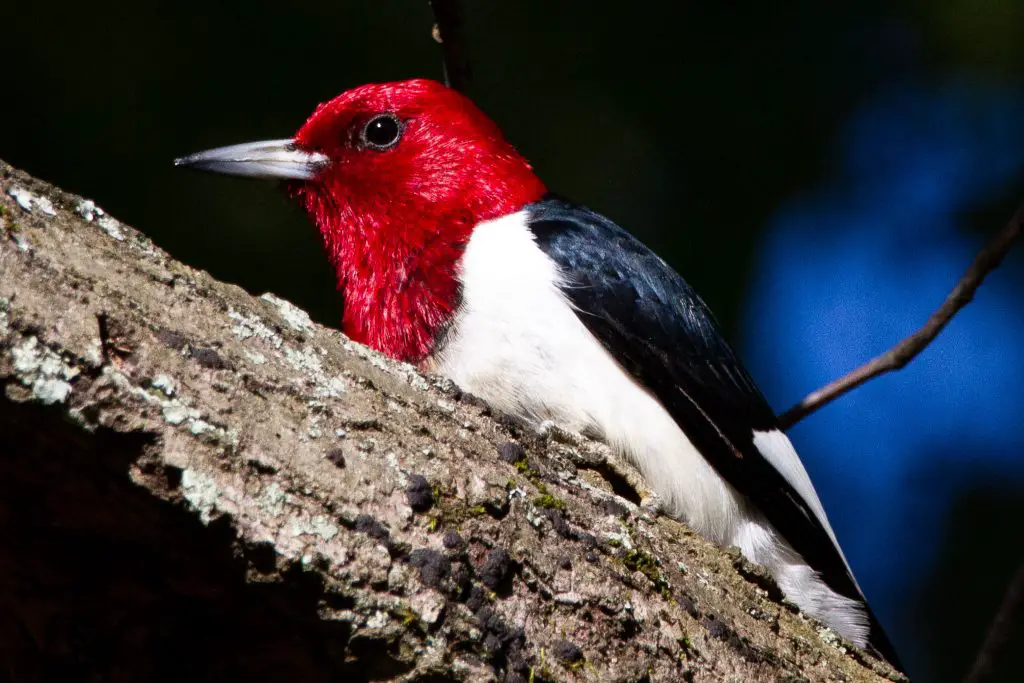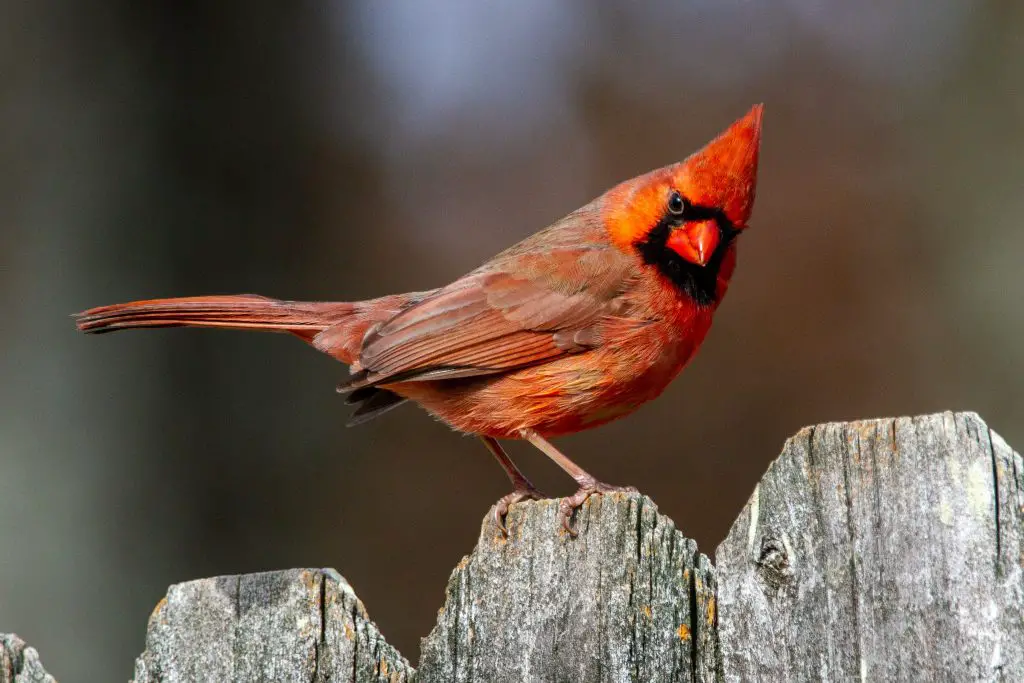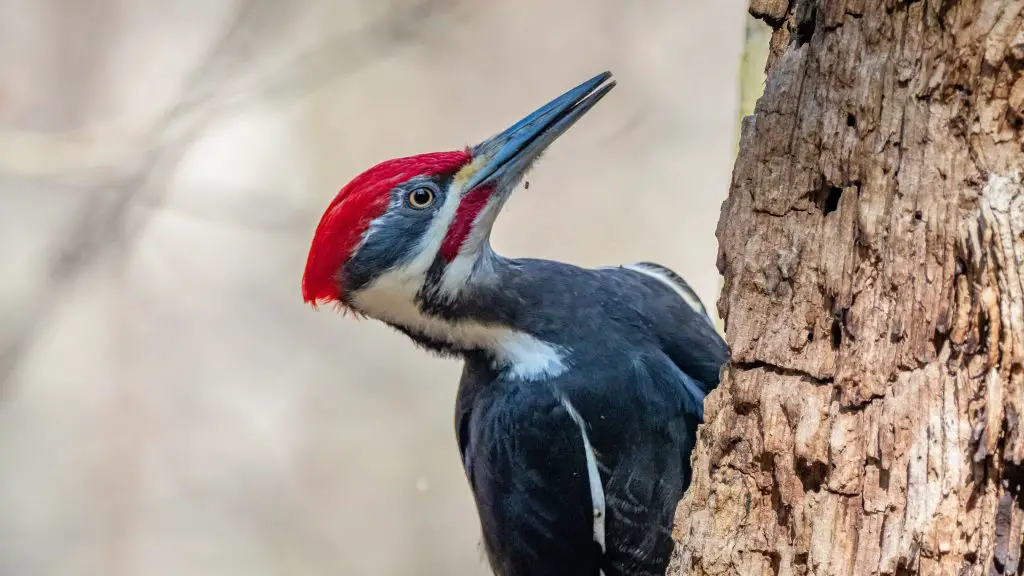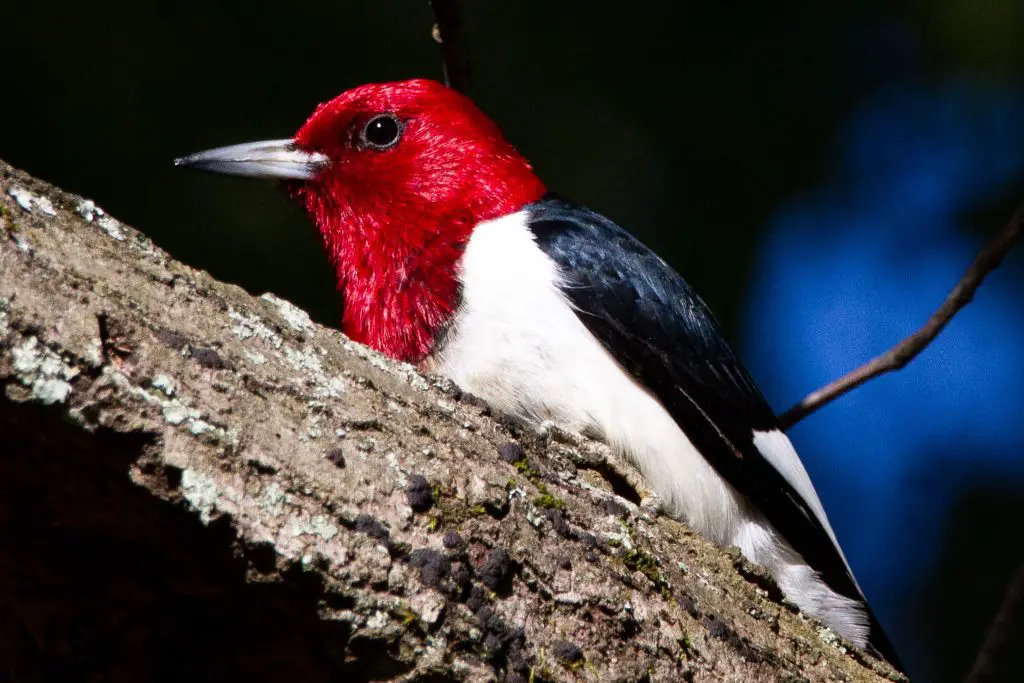In the bird realm, males frequently exhibit vivid coloration, particularly those small birds with red heads. Evolution has favored these vibrant hues as a mechanism for repelling rivals and appealing to potential mates.
Why concentrate on small birds with red heads?
Not only do these birds flaunt some of the most striking appearances, but studying them also facilitates your learning journey.
Embarking on bird spotting can be made simpler by focusing on a specific trait, in this context, the fiery crowns of small birds with red heads. Except for a brief period in Autumn, the color red is relatively rare in nature, which makes these birds conspicuous.
No matter where you reside in North America, a variety of red-crowned bird species, including small birds with red heads, can be found throughout the year.
Now, grab your binoculars, and let’s embark on a quest to discover 5 of the most brilliantly small birds with red heads.
#1 The House Finch

The male House Finch is distinguished by its red head and breast. This small bird with red head, equipped with short wings, exhibits a distinct bobbing flight pattern. Its curved, cone-shaped beak is ideally designed for cracking seeds open. They are frequently sighted in city backyards, especially if a bird feeder is present.
Where are the House Finch’s located?
Initially native to the southwestern region of the United States, the House Finch has expanded its range to cover most of North America. These birds were illicitly sold as pets in the early 20th century. The ones that were let go on the east coast managed to survive and have since propagated across the majority of the continent.
#2 Red Headed Woodpecker

The Red-headed Woodpecker is unmistakable, boasting a full red head contrasted with a small white torso and wings patterned in black and white.
This lively and vocal bird is among the rare species that store their food and conceal it. They are known to stash away nuts, seeds, and insects in tree crevices, fence posts, or beneath house shingles, returning later to feed.
Locating the Red-headed Woodpecker
The Red-headed Woodpecker’s habitat spans from central to eastern North America. They usually inhabit open woodlands, farmlands, and pine forests.
During the colder months, they generally migrate a short distance southward. Hence, you might spot them during the fall migration season anywhere from Canada to Pennsylvania.
#3 Northern Cardinal

The Northern Cardinal, a small bird with a red head, is one of the most identifiable avian species that has sparked the bird-watching interest of many. While the males display the vivid red typically associated with Cardinals, even the females bear a unique crest on their heads. These small birds with red heads prefer nesting in thick shrubs.
The female Northern Cardinal stands out as one of the rare songbirds. They utilize their melodious tunes to interact with their nesting partners.
Locating the Northern Cardinal
Their domain extends from the southwestern desert to the eastern regions of Canada. The Northern Cardinal is noticeably absent only from the Great Plains and the Pacific Northwest. As this small bird with a red head doesn’t migrate, they can be spotted even in the middle of winter, often frequenting backyard feeders.
#4 Pileated Woodpecker

The Pileated Woodpecker, despite not being a small bird, is a large avian species with an eye-catching display of black and white stripes, and they carry a bright red crest, making them seem like a sizable version of a small bird with a red head. In terms of physical proportions, they are comparable to crows.
These birds are renowned for their vigorous pecking, which can often be traced as they tunnel into tree trunks in their quest for insects.
Where to find the Pileated Woodpecker
The habitats of Pileated Woodpeckers, much like those of small birds with red heads, extend across mature forests in Canada and the eastern United States. To encounter these birds, seek out locations with an abundance of fallen trees, a hotspot for insects which comprise their primary diet. Since they do not migrate, they can be observed all year round.
#5 Yellow Bellied Sapsucker

The Yellow-Bellied Sapsucker is a petite woodpecker, characterized by its elongated bill. The males showcase a primarily black and white body, accentuated with vibrant red hues on their throat and head’s apex.
These birds use their robust beaks to bore holes in trees, subsequently returning to savor the oozing sap. They also have a predilection for insects that they encounter.
Finding the Yellow-Bellied Sapsucker
During the spring and summer, these birds can be sighted across Canada and the northeastern United States. With the arrival of fall, they migrate southwards, with some choosing to inhabit the southern U.S. while others journey as far as South America.
Their preferred habitat is young forests abundant in fast-growing trees from which they can extract sap.

